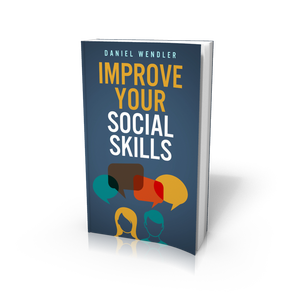Discomfort signals work together with comfort signals to help you manage interactions. When you realize that someone is uncomfortable, you can quickly take action to fix the situation. Once the person is giving off comfort signals again, then you know you have successfully put the conversation back on track.
Like comfort signals, discomfort signals appear in patterns, and are best understood in context. When you see a discomfort signal, think through the other comfort and discomfort signals you have seen, as well as the overall context.
I've compiled a list of the most common discomfort signals. I've picked these particular signals because they're both very common and very easy to spot, making them the perfect place to begin. This is not an exhaustive list so as you learn additional discomfort signals feel free to add them to your repertoire. But this list is all that you need to start noticing discomfort signals and using that information in your interactions.
Key Discomfort Signals
- Neck Touching or Neck Rubbing
Your neck is home to many nerve endings that, when rubbed, will lower your heart rate and comfort you. When people are uncomfortable, they will unconsciously touch their necks so that these nerves will activate and help to calm them.
Rubbing or stroking on the front or back of the neck is the most common kind of neck touching, but if the person is wearing a necklace or a necktie, they might fiddle with that also.
- Face Touching or Face Rubbing
There are also nerve endings in your face, so some people will rub their face to comfort themselves. Look for rubbing the forehead, rubbing the eyes, playing with the hair, rubbing lips---all of these are behaviors people use to calm themselves down. People will also sometimes puff out their cheeks and exhale.
- Leg Rubbing
This is where a seated person puts their hands (or hand) palm-down on their legs and slides it towards their knees. Picture someone wiping off sweaty palms on their pants and you've got the idea.
- Withdrawing or Blocking
If someone is in conversation, and they become uncomfortable with the person or the topic of conversation, they'll try to pull back or place objects between them and their partner. They might lean away, or adjust their chair so that they're not facing the person directly, or they might cross their arms to block their chest and/or cross their legs so that their knee is between them and the other person.
Be careful with this signal, though. Some people might cross their legs or lean back to sit more comfortably, or cross their arms because they're cold. That's why it's important to look at it in context---if you are seeing crossed arms or legs but otherwise positive signals, you are probably okay.
- Feet Pointed Away
Feet are extremely powerful indicators of how someone is actually feeling. If someone's feet are pointed away from their conversation partner, that's often a signal that they'd rather exit the conversation. Of course, this only applies if the person could comfortably and naturally point their feet at their partner---if you're sitting next to each other on an airplane, this doesn't apply because it would be very difficult for them to point their feet at you. But if you're standing facing one another, and you see their feet start pointing towards the door, you might want to graciously bring the conversation to a close.
- The Interruption Hand
This is not a sign of discomfort so much as an indication that the other person wants to speak. When someone wants to speak, their hand will often jerk upwards---sometimes with their pointer finger raised. The hand will only raise partway before stopping. Essentially what's happening is that the person wants to interject, but they stopped themselves before they actually said anything. Do them a favor and give them a chance to speak.
- Very Little Eye Contact
Nobody maintains eye contact all the time, but when they look away they should soon look back to you. If someone is looking everywhere but you, they're probably not comfortable. A simple way of testing this is to say their name in the conversation: for instance "Isn't that right, Carl?" Most people, upon hearing their name, will look at you and hold eye contact for several moments. If someone glances at you when you say their name, then immediately looks away, they may be uncomfortable.
Also, pay attention if someone is repeatedly looking away from you at one specific thing. For instance, if you're talking with someone and they keep glancing over their shoulder at someone else, it might be that they want to talk to that person.
Acting On Discomfort Signals
Of course, it's not enough to just know when someone is uncomfortable. You also need to take action to make them comfortable again. Fortunately, it's easy to know how to make your partner comfortable if you know how---so that's what we'll cover next!
Your Body Language Progress
Get The Full Guide
Enjoying the guide so far? Don't miss out on my full social skills guide. You'll discover how you can:
- Master conversation (including how to tell stories that hold their attention)
- Overcome social anxiety and boost your self-confidence
- Find lasting, fulfilling romantic success - not just a one-night stand.
If that sounds good to you, grab the ebook on Amazon for just $5!

